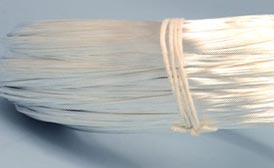Aluminum alloys come in two distinct types: heat-treatable and non-heat-treatable. Both basic types help to determine the characteristics of the chemical and metallurgical structure. The different alloys also have a different arc welding process.
The strength of non-heat-treatable aluminum alloy comes when alloying aluminum with additional elements. Typically, manganese, silicon, and magnesium are added. The alloy also gains power through cold working and strain hardening. Through regulating the amount of total reduction of material, it is possible to control the final properties.
Heat-treatable alloys also get their initial strength by adding elements to aluminum. Copper, magnesium, and magnesium silicide are commonly used when creating heat-treatable alloys. Sometimes zinc is also used to provide extra strength. The above elements add solid solubility during temperature increases. Heat-treatable alloys can have additional strengthening performed as a result handling temperature increases.
Both non-heat-treatable and heat-treatable alloy come in different versions, which all have different characteristics. Beryllium copper wire and phosphor bronze wire can be made as heat-treatable and not non-heat-treatable Call us at LFA Wire, so that we can give you a full run down of our product catalog. We will help ensure you get the best products for your business.

 Technical Data
Technical Data


